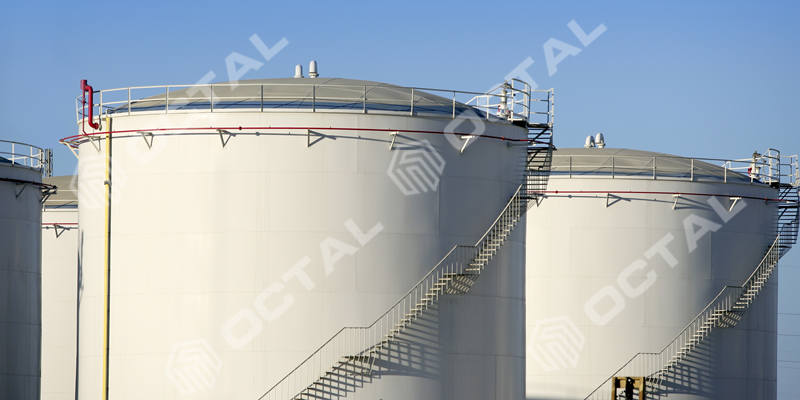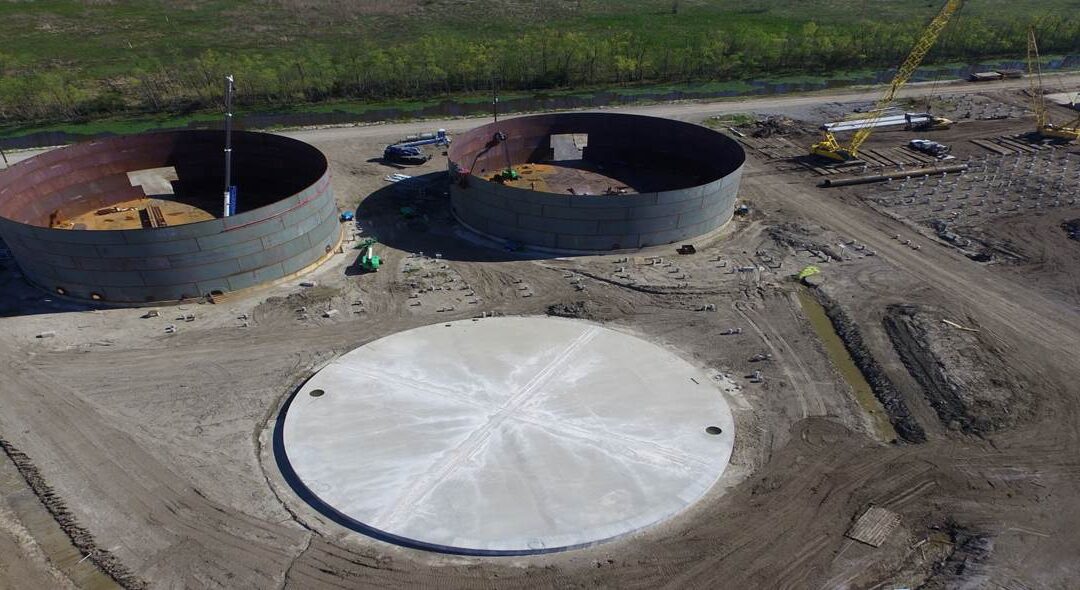API 650 Welding Inspection and Its Impact on Production Safety
Wiki Article
Just How Welding Examination Functions: A Comprehensive Guide for Professionals
Welding evaluation plays an important role in making sure the safety and dependability of welded structures. It involves an organized method that includes both visual assessment and advanced testing methods. Specialists have to acquaint themselves with crucial requirements and guidelines regulating the industry. Recognizing the usual flaws that can occur during welding is important. This guide will certainly check out these elements thoroughly, supplying insights into the procedures that maintain high quality and integrity in welding.Recognizing the Value of Welding Assessment
While numerous might undervalue the significance of welding examination, it plays a necessary role in ensuring the honesty and safety of bonded frameworks. Effective welding examination determines potential flaws and flaws that can jeopardize architectural strength and cause devastating failings. The examination process incorporates various methods, such as aesthetic examinations, ultrasonic testing, and radiographic analyses, each adding to the overall examination of weld top quality.
Along with securing the architectural honesty, welding inspection guarantees conformity with sector criteria and customer specifications. By ensuring that welds meet called for qualities and tolerances, assessments assist keep the dependability and long life of parts in numerous applications, from building and construction to aerospace. Furthermore, an extensive examination process cultivates a culture of quality and accountability among producers and welders. Eventually, welding evaluation is not merely a procedural action; it is an essential technique that underpins the security and performance of crafted systems across diverse fields.
Trick Specifications and Regulations in Welding Examination
The structure of efficient welding inspection hinges on adherence to developed regulations and requirements. Various companies, such as the American Welding Society (AWS) and the American National Standards Institute (ANSI), stated guidelines that guarantee quality and security in welding practices. Secret standards, such as AWS D1.1 for architectural welding and ASME Area IX for pressure vessels, provide complete standards for welding credentials, procedures, and inspections. Regulatory frameworks, including those from the Occupational Safety and Health Administration (OSHA), required safety techniques and worker defenses in welding settings. Compliance with these requirements is important for accomplishing constant weld quality and decreasing the risk of failures. Additionally, international standards like ISO 3834 further boost international uniformity in welding evaluation techniques. Professionals should stay notified about these laws to ensure that their assessment approaches straighten with industry assumptions and legal requirements, thus securing both workers and structural integrity.Preliminary Preparation and Aesthetic Inspection Techniques

Reliable welding evaluation starts with an extensive pre-inspection list that assures all necessary problems are met before the actual evaluation occurs. Following this prep work, visual issue identification plays a crucial duty in assessing weld high quality, allowing inspectors to detect issues such as fractures or improper combination. With each other, these methods create the foundation for an effective welding examination process.
Pre-Inspection List
Prior to commencing any type of welding inspection, a thorough pre-inspection checklist is important to guarantee that all needed prep work are completed and that visual assessment strategies are effectively utilized. Secret components of this list consist of verifying the welding procedure spec (WPS), ensuring all tools is adjusted and in good working condition, and confirming that the examiner possesses the needed accreditations. In addition, it is vital to examine any kind of previous examination reports and to assess the work environment for safety risks. The examiner ought to likewise validate that all relevant paperwork, such as material certificates and examination records, is readily available. Completing this checklist assists to establish a solid structure for an effective examination process, improving the dependability of the outcomes obtained.Aesthetic Defect Identification
An effective visual defect recognition procedure starts with cautious preliminary preparation and the application of well established aesthetic evaluation methods. Examiners need to ensure that the welding area is well-lit and clean, as sufficient visibility is essential for finding problems. A detailed exam of the weld joint's surface enables the identification of gaps, such as fractures, undercuts, or porosity. Examiners usually make use of devices like multiplying glasses or mirrors to boost their view of hard-to-reach locations. In addition, they ought to be acquainted with the particular welding requirements and standards relevant to the project. By sticking to these methods, examiners can effectively determine potential concerns, securing the integrity of the weld and conformity with sector criteria.Non-Destructive Testing Methods: A Review
Non-destructive screening (NDT) approaches play a crucial duty in the welding inspection procedure by ensuring the integrity and dependability of bonded structures without triggering any type of damage (API 650 Welding Inspection). These techniques enable assessors to evaluate the quality of welds while preserving the parts being analyzed. Typical NDT techniques consist of ultrasonic screening, radiographic testing, magnetic fragment screening, and dye penetrant screening, each offering one-of-a-kind advantagesUltrasonic screening uses high-frequency sound waves to discover inner flaws, while radiographic testing uses X-rays or gamma rays to picture the interior framework of welds. Magnetic fragment testing exposes surface area and near-surface problems by using an electromagnetic field and iron bits to the weld location. Color penetrant screening highlights surface-breaking problems via the application of a tinted color. Together, these NDT approaches offer essential discover here insights right into weld high quality, making it possible for specialists to make enlightened decisions pertaining to security and compliance in welding applications.
Usual Flaws and Their Effects
Recognizing usual issues in bonded joints is dig this necessary for maintaining architectural honesty and safety. Various problems can develop throughout the welding procedure, each lugging prospective implications for the general efficiency of the framework. Porosity, defined by little gas pockets within the weld, can damage the joint and jeopardize its load-bearing ability. Fractures might create because of thermal tension or incorrect cooling, causing possible failing under anxiety. Insufficient combination happens when the weld steel does not completely bond with the base product, resulting in weak joints that might not stand up to desired tons. Undercutting, where the base steel is deteriorated, can likewise lower the efficient cross-section of the weld. Additionally, extreme support can produce stress and anxiety concentrations that can result in failing. Recognizing these flaws promptly enables rehabilitative measures, making certain the longevity and dependability of bonded frameworks in important applications.Devices and Equipment Used in Welding Examination
Efficient welding inspection relies on a range of specialized devices and equipment to ensure the top quality and stability of welded joints. Important instruments include aesthetic evaluation tools, Resources such as amplifying glasses and borescopes, which enable inspectors to carefully take a look at welds for surface issues. Non-destructive testing (NDT) techniques, such as ultrasonic screening, radiographic testing, and magnetic bit screening, are essential for determining internal problems without harming the material.Dimension tools, consisting of calipers and weld assesses, help ascertain and analyze measurements conformity with specs. Additionally, solidity testers assess the mechanical buildings of welded joints. Individual protective devices (PPE) is likewise crucial, protecting the safety of inspectors while working in potentially dangerous environments (API 650 Welding Inspection). Each tool offers a specific function, collectively enhancing the performance of welding examination and adding to the dependability of completed tasks
Frequently Asked Concerns
What Qualifications Are Required to End Up Being a Welding Inspector?
To come to be a welding examiner, individuals typically require appropriate accreditations, such as AWS CWI or CSWIP, along with experience in welding procedures, engineering concepts, and understanding of inspection strategies, security criteria, and suitable codes.How Usually Should Welding Inspections Be Carried Out?
Welding evaluations ought to be carried out routinely, ideally at different job stages, consisting of pre-weld, during-weld, and post-weld. Regularity may also depend upon market standards, task specifications, and the intricacy of the welds entailed.Can Welding Defects Be Fixed After Inspection?

Yes, welding defects can commonly be fixed after inspection. Depending upon the intensity and kind of defect, suitable techniques such as remodeling or added welding might be used to recover architectural integrity and safety compliance.
What Industries Require Regular Welding Evaluations?

Various sectors, consisting of building and construction, production, aerospace, and auto, call for normal welding assessments - API 650 Welding Inspection. These examinations assure adherence to security requirements and quality assurance, lessening threats linked with architectural honesty and functional performance in welded components
How Do I Choose a Welding Inspection Solution?
To pick a welding evaluation solution, one ought to take into consideration certifications, experience, certifications, and sector credibility. Furthermore, assessing customer testimonials and ensuring the solution fulfills appropriate standards can aid ensure quality inspections and reliable outcomes.
While several may take too lightly the importance of welding assessment, it plays a crucial function in guaranteeing the honesty and security of welded structures. Key standards, such as AWS D1.1 for structural welding and ASME Area IX for stress vessels, supply extensive requirements for welding treatments, qualifications, and assessments. Reliable welding inspection begins with a comprehensive pre-inspection checklist that guarantees all required conditions are met before the actual examination takes location. Prior to starting any welding examination, a thorough pre-inspection checklist is important to guarantee that all required preparations are completed and that visual inspection techniques are effectively employed. Non-destructive screening (NDT) approaches play an essential duty in the welding inspection procedure by making certain the stability and dependability of welded structures without creating any kind of damages.
Report this wiki page